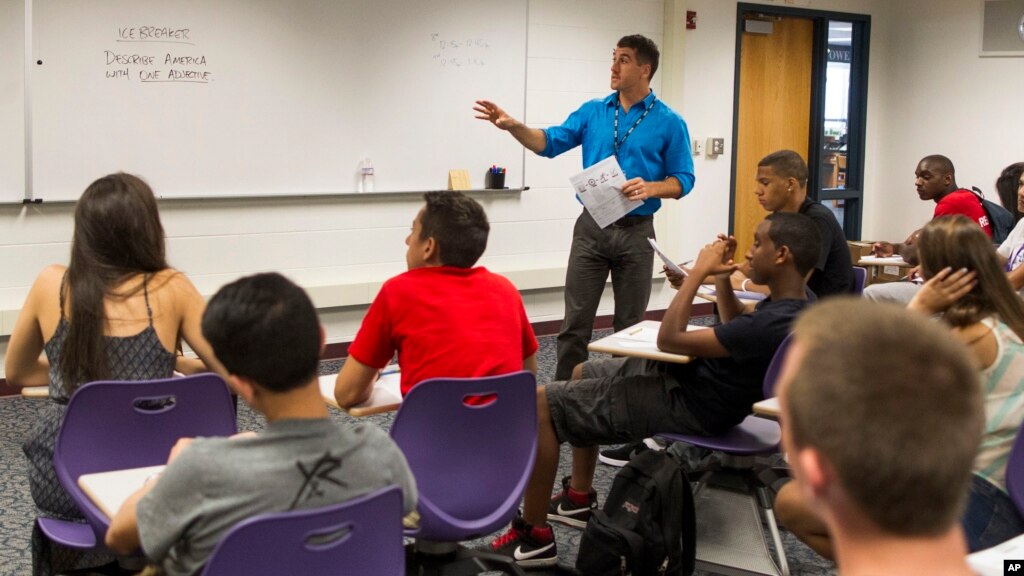
Urban school systems in the US give too many tests, says a new study.
President Obama agrees. In an open letter to parents, he asks:
“I’ve got a pop quiz for parents and teachers across the country. If our kids had more free time at school, what would you want them to do with it?
"A. Learn to play a musical instrument.
"B. Study a new language
"C. Learn how to code HTML
"D. Take more standardized tests
"If you’re like most of the parents and teachers I hear from, you didn’t choose 'D.' I wouldn’t either... In moderation, smart strategic tests can help us measure our kids’ progress in school.
"But I also hear from parents who rightly worry about too much testing. And I’ve heard from teachers who feel so much pressure to teach to a test that it takes the joy out of teaching and learning. Both for them and for the students.”
A group of 68 of the largest urban public school systems in the U.S. calls itself the Council of Great City Schools. It released a new study in October that looked at school testing in 66 urban school districts.
The study found that Grade 8 students in the 2014-2015 school year spent an average of 4.2 days, or 2.3 percent of school time, taking tests. Grade 8 had the most testing time of any grade.
Too many tests?
The report said that schools gave too many tests in the same subject. Students had to show how much they had learned again and again.
Often, schools did not receive test results until months later. When test results arrived, schools could not make timely changes to the curriculum to improve learning.
Also, the report found that the majority of tests did not align with educational standards. The tests gathered information about how the students were doing. But it was unclear that the tests measured if students had the skills to succeed in college or a career.
The result, the report says, is an illogical system of national testing. The system does not seem to be well planned.
Why are there so many tests?
The study comes at an important time in the debate over testing in U.S. schools. In recent years, politicians and educators have debated how much testing is necessary.
Historically, local and state governments have been responsible for schooling. In the 1990s, educators and politicians demanded that the federal government step in. They asked that state and local governments agree to education standards. Some schools in some states and cities were not doing well.
In 2002, Congress passed the No Child Left Behind Act. The law's goal was to improve standards at primary and secondary schools. It required states to find the substandard schools by testing them.
But many students performed poorly even though they graduated from high school. Some were not prepared for college or for a career. Politicians debated about using national standards to measure education across the US.
They never reached an agreement.
In 2009, some US states began the Common Core Standards Initiative. Common Core sets milestones students should reach for English, Language Arts and mathematics. States that have adopted Common Core will test to measure student's success in the same subject areas.
However, local and state governments can also give their own tests. And those tests differ, even if they cover the same subject. This partly explains why schools give so many tests in the U.S.
International Perspectives on Testing
Ideas about testing in schools vary around the globe.
In Japan, it is common for schools to have many tests, particularly in high school.
Glen Hill, an assistant professor at Obihiro University in Hokkaido, Japan, said the private school where he taught had five tests a year. They lasted all day and covered many subjects.
Like in the U.S., test results in Japan were used to measure a school's performance.
In other countries, students spend very little time taking tests.
In Finland, high-school students take one national test for entrance into a university. Students may take other tests, but they are smaller, and measure progress. The results do not hold schools accountable, as they do in the U.S. Many education experts consider Finland to have the best education system in the world.
One feature of standardized tests is that they allow for comparison. Australia has a website with test scores, so that parents, students and educators can compare schools across Australia. They can see which schools or groups are performing at a lower level.
What do children really remember?
The White House released an action plan on testing after the Great Cities report. It suggests principles and steps to balance teaching with testing.
President Obama said he did not remember how teachers prepared him to take a test. Instead, he remembers how they prepared him to explore the world around him.
“But when I look back on the great teachers who shaped my life, what I remember isn’t the way they prepared me to take a standardized test. What I remember is the way they taught me to believe in myself. To be curious about the world.
"To take charge of my own learning so that I could reach my full potential. To inspire me to open up a window into parts of the world I’d never thought of before. That's what good teaching is. That's what a great education is. ... Because learning is about so much more than filling in the right bubble."
I’m Jill Robbins.
And I'm John Russell.
Now it’s your turn. If you are a parent, how do you feel about your child taking many tests? If you are a student, do you feel you are taking too many tests? Write to us in the Comments section or on our Facebook page.
John Russell wrote this story for Learning English. Kathleen Struck was the editor.
Words in This Story
standardize - v. to change (things) so that they are similar and consistent and agree with rules about what is proper and acceptable
urban - adj. of or relating to cities and the people who live in them
standards - n. a level of quality, achievement, etc., that is considered acceptable or desirable
bubble - n. a circle in which you make a mark to show that you choose something (often on a test).
illogical - adj. not thinking about things in a reasonable or sensible way


